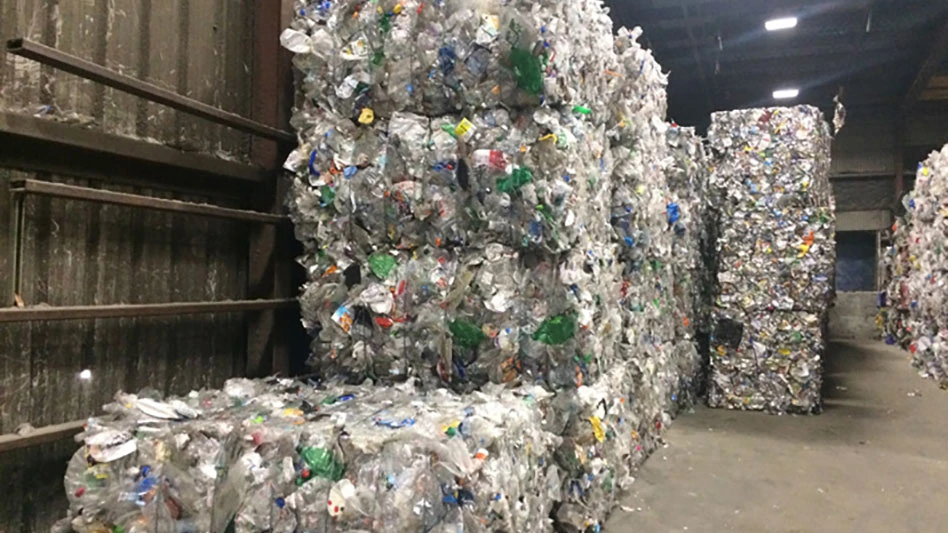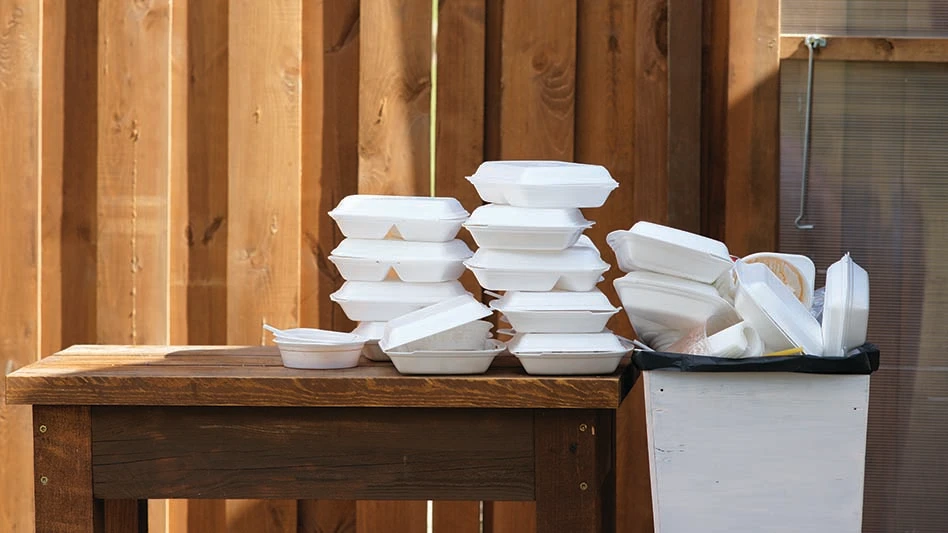The following story was prepared by a senior economist with Rio Tinto, a London-based mining and primary metals producing company, and offers a look at how these companies are now viewing metals recycling.
The Mining Council of Missouri has a catch phrase that pinpoints the fundamental role of mining in the economy. ‘’If it can’t be grown, it’s got to be mined,’’ they say. These days, of course, it isn’t exactly right. There is the third option of recycling, and this third option is growing in importance.
It is easy to see recycling and the use of primary (mined) metals as being in competition: the obvious perception is that the more scrap metal is used, the less primary is needed.
This is, however, by no means the whole truth. There is a positive story to be told on recycling, one that probably has not found wide enough circulation.
THE PATH TO SUSTAINABILITY
Metals recycling rates are already much higher than for many other raw materials, and metals do not degrade with recycling (unlike many substances). Because of this, metals might win market share against other materials that are less recycled and less recyclable, as pressure for sustainability increases. Most of the data available comes from the U.S., but the lessons are applicable worldwide.
Before the last couple of decades, the recycling (or ”secondary”) industry was treated with benign neglect by primary producers. If someone could make money treating scrap or waste then they were allowed to get on with it. If not, the material would, typically, be dumped. In many countries the scrap business, or large parts of it, was out at the margins of respectable business, often part of the informal untaxed economy, or even with criminal overtones.
The secondary metals industry was most certainly not a business for major mining companies, although many smelters were involved to a greater or lesser extent. Nevertheless scrap supply still played an important role in the life of primary metal producers.
Secondary production is typically much more flexible than primary production, which is capital intensive and large scale. Because of this it was an important “swing” producer; more scrap would be used when prices were higher, less when prices were lower, helping to balance the market over the economic cycle.
Today, the industry is no longer left to its own devices. There has been growing pressure both to encourage recycling and to regulate the secondary industry. Most recently there has been a move to encourage manufacturers to design products to take account of what happens when their lives are over, to design products to make them reusable or recyclable.
The first major wave of pressure to raise recycling rates stemmed from worries about the environmental impact of dumping wastes. The second wave has been driven by a general determination to reduce the use of scarce or non-renewable resources. These resources include the energy and land used in making raw materials and products, as well as the raw materials themselves.
The net result has been a stream of legislation intended to control the disposal and shipment of scrap and waste products, and to encourage recycling. This is pushing up the amount of materials recycled or re-used, and further increases will be seen in the future. Legislation to encourage recycling and re-use also reduces the price sensitivity of recycling. The business, then, becomes driven by directives, not by underlying economics and profit.
AN ENDLESS LOOP
At first hearing this sounds like bad news for primary metal producers. On the one hand, with more recycling there will be less demand for our product. On the other, the price cycle may be more extreme, as secondary supplies will not be affected so much by prices, and will continue regardless. The experience of lead since the mid 1980s shows these threats very clearly.
But the truth is actually more complex. The growth of recycling actually offers the primary industry opportunities, without the need to join the industry, since it will encourage manufacturers to use metal more, other things being equal.
Metals actually represent only a small part of the total waste stream. They account for only 8% of U.S. Municipal Solid Waste (MSW), which is the waste handled by local authorities.
The U.S. Environmental Protection Agency (EPA) estimates that about 14% of U.S. MSW is recycled, and 14% composted. Another 17% is burnt for energy, and the remaining 55% is dumped. In 1980, only 10% was either recycled or composted.
The bulk of material going to landfill is household and consumer waste that contains little metal. U.S. household waste, which makes up two thirds of MSW, has risen from 1.6 pounds per person per day in 1960, to an estimated 3.6 pounds in 2000. The amount of metal in the household waste stream has not grown at all, staying at about 0.3 pounds. This means that metal’s share has fallen by more than half. In terms of the volume of material dumped, metals are not the problem: the growth has been in plastics, wood, paper and other organic matter.
So, the metal stream is a small part of the total—and it is also the most intensively recycled. A good example of the high level of metals recycling is the aluminium can. It is estimated that 63% of aluminium cans in the U.S. were recycled in 1998. This is lower than the industry target of 75%, but it still represents about 63 billion cans, or 250 for every man, woman and child.
It is the highest recycling rate for any packaging material (followed by steel cans, which have a 50% to 60% recycling rate). By comparison, only 25% of plastic bottles, and 35% of glass bottles are recycled. While this shows the high level of recycling in aluminium cans, it also shows that there is further room for it to increase.
It is unfortunately difficult to calculate overall recycling rates for different materials. There are a host of statistical problems and a number of different approaches, which will all give different answers. If products have a long life and if growth in that product is reasonable then the amount of material which can be recycled compared to the current market will be smaller than if the product has a short life. Many metals applications are very long life, in construction and infrastructure (20-40 years or more), or medium life (10-20 years), such as vehicles. Relatively little is used in short life applications like packaging, which are discarded at the moment of use. Some calculations of recycling rates do not take this into account, and so underestimate metals recycling compared to raw materials used in short life products.
The growth of steel frame construction methods for U.S. housing, substituting for timber frames, will not be possible without high recycling rates in steel. Overall, based on U.S. estimates, steel recycling rates look likely to equal those achieved with aluminium cans.
This high level of recycling partly reflects the fact that metals, in many forms, can be recycled forever, with no reduction in usability. Many other materials degrade when recycled, and cannot be re-used in high quality applications. For example, expensive high performance plastics may be recycled into garbage bags, and are therefore dumped after a second use.
A final advantage of recycling for metals is that it uses much less energy than primary metal production. In the case of aluminium, only 5% of the energy is needed to produce secondary aluminium compared to primary; for other metals the savings are smaller but still substantial.
In the U.S. the energy savings from using steel scrap rather than making new steel are estimated to be enough to supply the electrical power required by about one fifth of American households. This may seem to be a point “against” primary metals, and is often viewed as such. But it should in fact be seen as a point in favor because of the high recyclability of metals.
When this is taken into account, primary metal production is only the first step in the creation of something that will continue to be usable for centuries, with much less energy use, not simply the depletion of a finite resource. Life cycle analysis, which looks at the life of products through disposal, should show these benefits clearly for metals.
CAMOUFLAGED GREEN
All these factors give metals a green tinge, but it is not clear that this message has been effectively put across. The following is from the U.S. EPA’s Web site (from a game in the children’s section).
“Because metal is a non-renewable resource (when it’s gone, its gone), Rosy makes sure Widget Manufacturing buys recycled metal to produce its widgets. She buys it from the company that recycles metal items for the Recycle City Materials Recovery Facility. She also uses scrap metal that Joe’s Auto Wreckers helped collect.”
Precisely because Rosy is buying recycled metal and scrap it is quite wrong to say that when it’s gone it’s gone!
Such misconceptions are not helpful. For many metals high levels of recycling have already been achieved and this, along with metal’s high inherent recyclability, should be a very positive factor when it comes to materials choice. Future growth in recycling rates may take the edge off primary demand growth, but it will certainly not stop it.
One possible outcome is that higher recycling rates in industrial countries will enable a growing share of primary output to be used in fast growing but scrap-poor developing countries. This would also help underline the connection between better living standards and metals output, which is often overlooked.
Chris Torrible is a senior economist with Rio Tinto in London, specializing in the base metals sector. This article was featured in Rio Tinto Review magazine, issue 54 and is the copyright of Rio Tinto.
Get curated news on YOUR industry.
Enter your email to receive our newsletters.

Explore the August 2001 Issue
Check out more from this issue and find your next story to read.
Latest from Recycling Today
- GFL opens new MRF in Edmonton, Alberta
- MTM Critical Metals secures supply agreement with Dynamic Lifecycle Innovations
- McClung-Logan Equipment Company joins Tana’s authorized dealer network
- Grede to close Alabama foundry
- Plastics Recycling Conference 2025: Working toward their targets
- SWACO rolls out new commercial recycling and food waste programming
- Updated: Matalco to close Canton, Ohio, plant
- Metso launches electric Anode Weighing and Casting Machine






